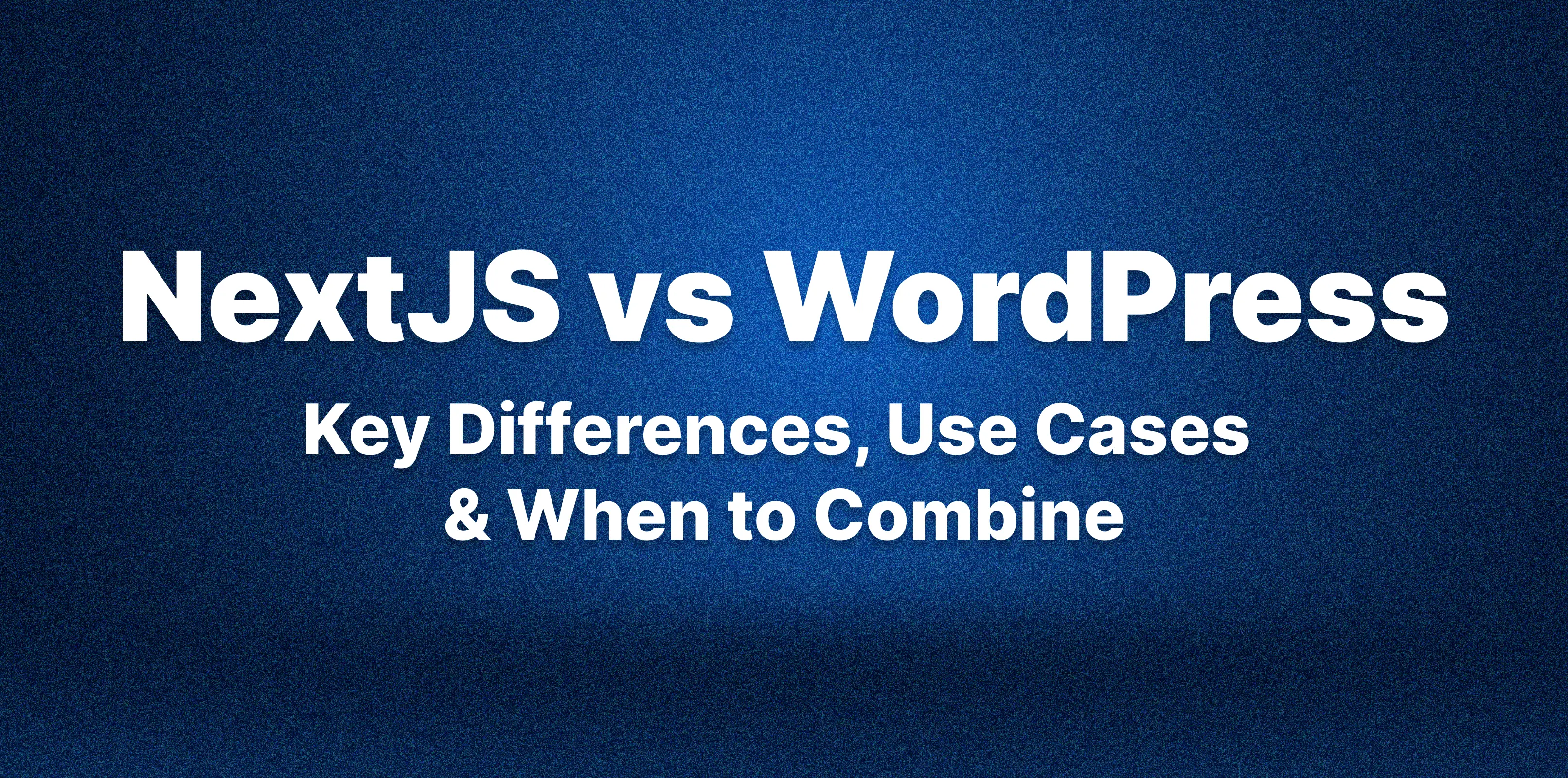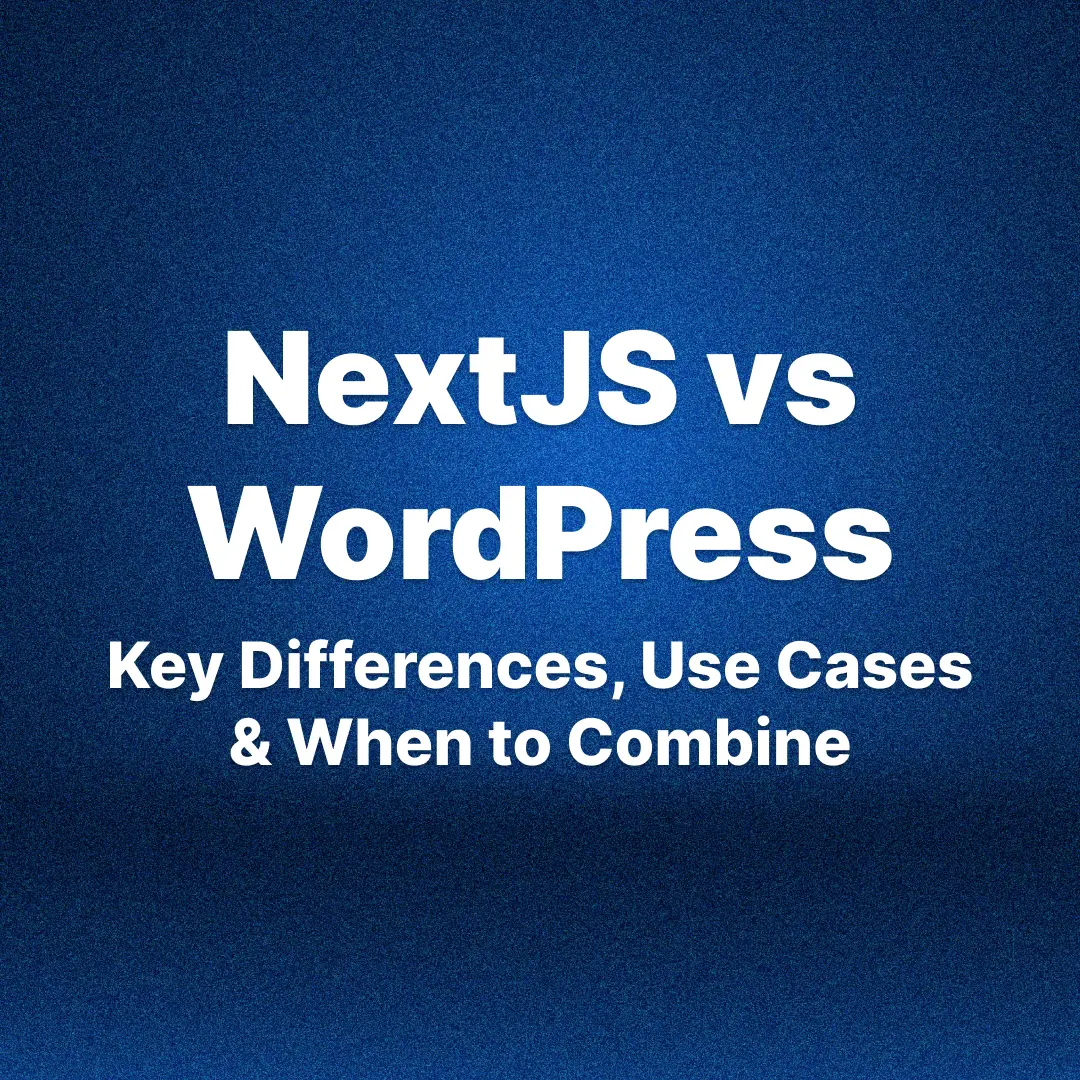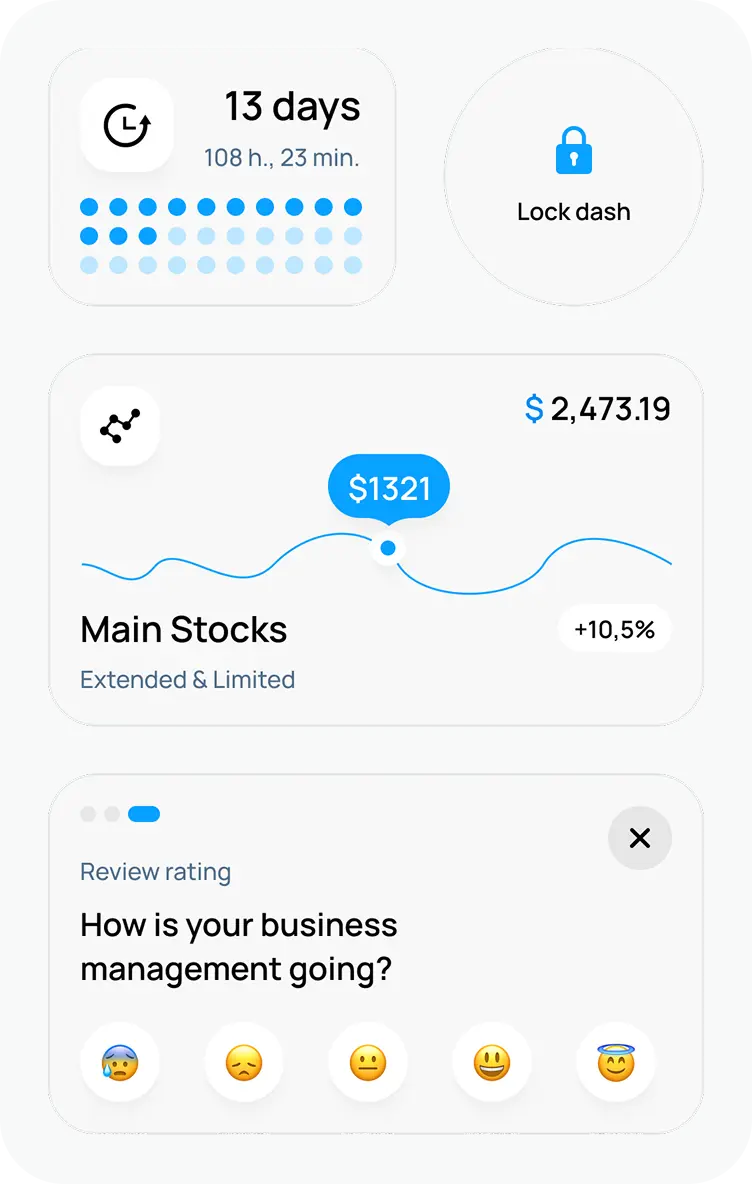NextJS vs WordPress: Key Differences, Use Cases & When to Combine
August 4, 2025•4 min read

I hope you enjoy reading this post. If you want us to do your frontend development or design, click here.
Author: Alex Vasylenko | Founder of The Frontend Company


When I first sat down to write this article, I wasn't sure if it made sense at all. Comparing WordPress and Next.js? It felt like lining up a Swiss Army knife next to a Formula 1 car and asking, "Which one's better for travel?" One is a battle-tested CMS with decades of legacy, and the other is a modern React framework that doesn't even come with a built-in content editor.
Different tools. Different philosophies. Different planets.
But the deeper I delved into the research, the more I realized why this comparison matters. Because when CTOs, founders, and engineering leads ask, "Should we use WordPress or Next.js?" they're making a bet on how their team will work, how fast they can move, and how their stack will scale over time.
So, in this article, I'll walk you through the architectural trade-offs, show you where each stack fits best, and explain how they can even work together in a headless setup. Whether you're launching a marketing site or rebuilding your entire frontend, this piece will help you figure out which future you're building toward.
WordPress vs Next.js: What Do You Actually Choose?
You're choosing how your team works, how your site scales, and who's in control when something inevitably breaks at 2 AM.
On the surface, WordPress and Next.js don't even live in the same category.
WordPress is a fully integrated system: it comes with a backend, a frontend, a database, a content editor, a theme layer, and about a million plugins, half of which are outdated, but still. You install it, pick a theme, maybe click a few buttons in Elementor or Gutenberg — and boom, you're live.
Next.js, on the other hand, gives you a React app. No editor. No CMS. No database. Just routing, rendering, and the freedom (or burden) to plug in whatever you want. You bring the CMS. You set up the deployment pipeline. You decide how content is stored, fetched, and rendered.
So, what are you actually choosing?
You're choosing between a product and a platform.
If you need to get a site live fast and your content team doesn't want to talk to a developer every time they change a heading, WordPress is the clear winner. It's built for people who think in pages and posts, not components and state management.
But if you're building something that needs custom UX, has performance requirements, or is meant to grow into a product, not just a site, Next.js starts to make a lot more sense. It gives your engineering team full control over everything from routing to rendering strategy. You can plug it into any headless CMS — WordPress included — and serve blazing-fast pages via CDN or edge functions. It's not out of the box, but it's built for the long game.
WordPress gives you a polished car with preset routes. Next.js hands you a blank map, a powerful engine, and says, "Go wherever you want — just know you're building the road too."

Transform your UI for peak performance!
🔹
Unlock seamless, high-performance frontend solutions tailored to your business.
🔹
Get an interface that outshines competitors and delights your users.
How WordPress and Next.js Work Together: The Headless Combo
Headless sounds like a marketing buzzword, but the idea is simple.
You take a traditional CMS — like WordPress or Contentful — and you remove its responsibility for rendering your website. No more PHP templates and theme editing. WordPress is just responsible for the content. Then, you build your frontend separately, using a modern framework like Next.js.
So, what does that actually look like?
Your content team uses WordPress to post blog posts, manage pages, and add media.
Next.js fetches that content using WordPress's REST or GraphQL API.
The frontend (Next.js) handles everything the user sees — layout, styling, routing, performance.
The site is deployed statically or at the edge and loads insanely fast.
That is what we call "headless." You've removed the "head" (frontend) from WordPress and replaced it with something faster, more flexible, and developer-controlled.
Examples: How Companies Combine WordPress and Next.js
I know how our readers love examples, so here are some of them to see scenarios where this combination is working well:
Backlinko (SEO blog): Once a heavyweight WordPress site with legacy code and massive images, Backlinko experienced slow loads and concerns regarding Core Web Vitals. Its founder, Brian Dean, admitted, "We struggled with Backlinko's loading speed for years… our load times were still slow". In 2020, Backlinko's CTO reached out to an agency to try Next.js. After a Jamstack proof of concept, they rebuilt the entire blog using Next.js and headless WordPress. The result: much faster pages, no caching headaches, and the ability to serve content from the edge. Notably, they kept WordPress as the CMS (editors still love it) but used WPGraphQL for the API.
Kit.com (marketing site): Kit, a fintech platform, had a fragile WordPress marketing site (~3 million visitors per year) maintained by one developer and a team of designers. The site was "hack upon hack" and sluggish; even minor edits took 20–45 minutes to rebuild and deploy. In 2022, they rebuilt the entire marketing site using Next.js, using WordPress as a headless CMS, with only one developer and two designers. The result: This 14-month project fixed their technical debt and gave them complete control over UX and performance.
WebDevStudios (agency): WDS documented building a 1,000+ page site via Next.js + headless WP. They praise Next.js's simplicity and JAMstack speed. However, they also highlight challenges: complex data models generated millions of GraphQL queries during builds, and maintaining two stacks (WordPress plugins and NPM modules) was a "dependency hell." Their story illustrates that a headless WordPress project can succeed at scale but requires careful engineering to avoid build-time or performance issues.
BrightonSEO (events site): The content-heavy events site moved from WordPress to Sanity + Next.js. Its founder says they "outgrew our WordPress setup as our events grew," and switching to a headless stack allowed them to "move much faster" – launching a new site in just two days! After a decade on WordPress, they "never looked back," and all their clients followed suit. This example demonstrates that even long-time WordPress users migrate when scaling or agility becomes an issue.
When to Use WordPress, When to Use Next.js, and When to Combine Them
Use WordPress when:
You need to launch fast with minimal dev effort.
Your marketing team runs the show and wants full control.
You're building a blog, brochure site, or MVP with standard content patterns.
You have limited developer resources and want to rely on themes and plugins.
You're okay with monolithic architecture and shared hosting.
Examples: startup marketing sites, agency-built business websites, and small editorial teams without in-house developers.
Use Next.js when:
You care about performance, SEO, and web vitals.
You want custom UX, app-like behavior, or advanced frontend logic.
You're working in a developer-led org with a React-heavy stack.
You need scalability, composability, and fine control over infrastructure.
You want to own the frontend architecture and iterate fast.
Examples Include Product sites, web apps, SaaS dashboards, high-traffic platforms, and Jamstack builds.
Use WordPress + Next.js together when:
You want to keep WordPress as your CMS but ditch PHP rendering.
Your content team loves WordPress, but your dev team wants React.
You need both editorial flexibility and frontend performance.
You're migrating from WP and want to transition gradually without retraining the whole team.
You need a headless setup, but don't want to reinvent content ops.
Examples: Large marketing sites with dev teams, SEO blogs with serious traffic, and hybrid organizations modernizing legacy stacks.
NEED HELP TO CHOOSE THE RIGHT TECH STACK?
Book a FREE 1-hour call with our team and we will help you make the right choose
Final Word
Don't just think about your tech stack. Think about your org structure, your team's strengths, and how you want your product to evolve.
Are you building a site that needs to ship fast or a system that needs to last?
WordPress and Next.js are powerful when used in the proper context. Just don't make the mistake of picking based on what's trendy — choose based on how you actually work.
And if you ever catch yourself googling "Next.js vs WordPress" again — remember: it's not a battle. It's a strategy.

Unlock the full potential of your product

Boost customer retention & satisfaction

Become more competitive on the market

Move to the latest technologies stacks

Improve usability & visual appeal
FAQ

Alex Vasylenko is the founder of The Frontend Company, DBC and several other successful startups. A dynamic tech entrepreneur, he began his career as a frontend developer at Deloitte and Scandinavia's largest banking company. In 2023, Alex was honored as one of 'Top 10 Emerging Entrepreneurs' by USA Today.
RATE
Rate this article please
This will help us provide more useful information.
1856 ratings, average 4.98 out of 5
